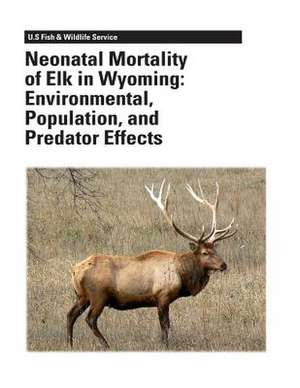Neonatal Mortality of Elk in Wyoming
Autor Bruce L. Smith, Elizabeth S. Williams, Katherine C. McFarlanden Limba Engleză Paperback
Preț: 88.49 lei
Nou
Puncte Express: 133
Preț estimativ în valută:
16.93€ • 17.61$ • 13.98£
16.93€ • 17.61$ • 13.98£
Carte disponibilă
Livrare economică 24 martie-07 aprilie
Preluare comenzi: 021 569.72.76
Specificații
ISBN-13: 9781479140985
ISBN-10: 1479140988
Pagini: 42
Dimensiuni: 216 x 279 x 2 mm
Greutate: 0.12 kg
Editura: CREATESPACE
ISBN-10: 1479140988
Pagini: 42
Dimensiuni: 216 x 279 x 2 mm
Greutate: 0.12 kg
Editura: CREATESPACE
